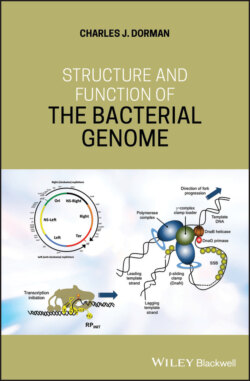Читать книгу Structure and Function of the Bacterial Genome - Charles J. Dorman - Страница 29
1.18 The Macrodomain Structure of the Chromosome
ОглавлениеThe bacteriophage lambda integrase‐mediated site‐specific recombination system has been exploited in studies of nucleoid organisation in E. coli and Salmonella (Garcia‐Russell et al. 2004; Valens et al. 2004). Recombination between copies of the lambda attachment site requires physical contact between the sites and these can be created by random collision (Crisona et al. 1999; Dorman and Bogue 2016). Sites placed at different distances from one another around the chromosome can be assessed for interaction frequency, providing an estimate of the frequency of contact between different parts of the chromosome. At the same time, regions of the chromosome that rarely interact have also been discovered. This analysis led to the proposal that the chromosome is divided into a small number of large territories called macrodomains (Valens et al. 2004) (Figure 1.1). E. coli and its close relatives have four macrodomains (Ori, Left, Ter, and Right) and two non‐structured (NS) regions: NS‐Left and NS‐Right (Cameron et al. 2017; Jiang et al. 2015; Thiel et al. 2012). The NS domains are determined by their proximity to the Ori macrodomain: any region that is placed next to Ori acquires the features of an NS domain (Duigou and Boccard 2017).
